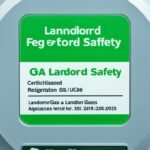The Essential Guide to Assured Shorthold Tenancy Agreements for UK Landlords
Introduction
As a residential landlord in the UK, understanding Assured Shorthold Tenancy (AST) agreements is crucial for effectively managing your rental properties. An AST agreement outlines the rights and responsibilities of both the landlord and tenant, providing a clear legal framework for the tenancy. In this comprehensive guide, we’ll delve into the key aspects of AST agreements, helping you navigate the process with confidence.

What is an Assured Shorthold Tenancy Agreement?
An Assured Shorthold Tenancy agreement is the most common type of tenancy agreement used for residential properties in the UK. It is a legally binding contract between the landlord and tenant that sets out the terms and conditions of the tenancy, including:
- The duration of the tenancy
- The amount of rent payable
- The rights and obligations of both parties
According to the UK government’s official guidance, an AST agreement can be used for tenancies lasting between 6 months and 7 years. However, most ASTs are set for an initial fixed term of 6 or 12 months.
Key Components of an AST Agreement
To ensure your AST agreement is comprehensive and legally sound, it should include the following essential components:
- Names and addresses of the landlord and tenant
- Details of the property being rented
- Start and end dates of the tenancy
- Amount of rent and when it is due
- Deposit amount and how it will be protected
- Landlord and tenant responsibilities
- Notice periods for ending the tenancy
By clearly defining these elements in the agreement, both parties will have a clear understanding of their rights and obligations, minimizing the risk of disputes arising during the tenancy.
Landlord Responsibilities Under an AST Agreement
As a landlord, you have several key responsibilities when entering into an AST agreement:
- Ensuring the property is safe and in good repair
- Providing a valid Energy Performance Certificate (EPC)
- Protecting the tenant’s deposit in a government-approved scheme
- Providing the tenant with a copy of the “How to Rent” guide
- Allowing the tenant quiet enjoyment of the property
By fulfilling these responsibilities, you not only comply with legal requirements but also foster a positive relationship with your tenants.
Tenant Responsibilities Under an AST Agreement
Tenants also have important responsibilities under an AST agreement, which typically include:
- Paying rent on time
- Taking care of the property and reporting any necessary repairs
- Not causing a nuisance to neighbors
- Allowing the landlord access for inspections and repairs (with proper notice)
- Returning the property in the same condition at the end of the tenancy
By clearly communicating these responsibilities to your tenants, you can help ensure a smooth and successful tenancy.

Ending an Assured Shorthold Tenancy
When it comes time to end an AST, both landlords and tenants must follow the proper procedures. If the tenant wishes to leave at the end of the fixed term, they must provide at least one month’s notice. If the landlord wants to regain possession of the property, they must serve the tenant with a valid Section 21 or Section 8 notice, depending on the circumstances.
It’s crucial to understand the differences between these notices:
- Section 21 notice: Used to end the tenancy after the fixed term has expired, provided the landlord has met all their legal obligations.
- Section 8 notice: Used to end the tenancy during the fixed term if the tenant has breached the terms of the agreement (e.g., non-payment of rent).
By following the correct procedures for ending an AST, landlords can minimize the risk of legal disputes and ensure a smooth transition between tenancies.
Dealing with Tenant Disputes
Despite your best efforts, disputes with tenants may still arise. Common issues include:
- Rent arrears
- Property damage
- Nuisance or anti-social behavior
To effectively handle these situations, it’s essential to:
- Communicate with the tenant and try to resolve the issue informally
- Keep detailed records of all communications and events
- Follow the proper legal procedures if the matter escalates
In some cases, you may need to seek legal advice or begin eviction proceedings. However, by addressing issues promptly and professionally, you can often resolve disputes without resorting to these measures.
Protecting Your Investment
As a landlord, your rental property is a significant investment. To safeguard your interests, consider the following:
- Landlord insurance: Comprehensive coverage for your property and any potential liabilities.
- Regular inspections: Conduct periodic inspections to ensure the property is being well-maintained and to identify any potential issues early on.
- Tenant referencing: Thoroughly vet prospective tenants, including credit checks and references from previous landlords.
By taking these proactive steps, you can minimize the risks associated with being a landlord and protect your investment for the long term.
The Importance of Keeping Up-to-Date with Legislation
The private rented sector in the UK is subject to a range of laws and regulations, which can change over time. As a landlord, it’s vital to stay informed about any updates that may affect your AST agreements or your responsibilities as a landlord.
Some recent legislative changes include:
- The Tenant Fees Act 2019, which bans most letting fees and caps tenancy deposits.
- The Electrical Safety Standards in the Private Rented Sector (England) Regulations 2020, which requires landlords to ensure electrical installations are safe.
- The Energy Efficiency (Private Rented Property) (England and Wales) Regulations 2015, which set minimum energy efficiency standards for rented properties.
By keeping abreast of these and other changes, you can ensure your AST agreements and practices remain compliant with the law.

Using Technology to Streamline AST Management
In today’s digital age, there are numerous tools and platforms available to help landlords manage their AST agreements more efficiently. Some popular options include:
- Online tenancy agreement templates and builders
- Digital signature software for secure, paperless contracts
- Property management software for tracking rent payments, maintenance requests, and more
By embracing these technologies, you can save time, reduce paperwork, and provide a more convenient experience for your tenants.
Seeking Professional Advice
While this guide provides a comprehensive overview of AST agreements, it’s essential to remember that every tenancy is unique. If you’re unsure about any aspect of your AST agreement or your responsibilities as a landlord, seeking professional advice from a qualified solicitor or letting agent can help you navigate complex situations with confidence.
Key Takeaways
- Assured Shorthold Tenancy agreements are the most common type of tenancy agreement for residential properties in the UK.
- A well-drafted AST agreement should clearly define the rights and responsibilities of both the landlord and tenant.
- Landlords have key responsibilities, including ensuring the property is safe and protecting the tenant’s deposit.
- Tenants must pay rent on time, take care of the property, and not cause a nuisance to neighbors.
- When ending an AST, landlords must follow the proper legal procedures, such as serving a valid Section 21 or Section 8 notice.
- Landlords should stay informed about legislative changes affecting the private rented sector and consider using technology to streamline AST management.
- Seeking professional advice can help landlords navigate complex situations with confidence.
By understanding the intricacies of AST agreements and implementing best practices, you can create a solid foundation for successful, long-term tenancies and protect your investment as a residential landlord in the UK.



